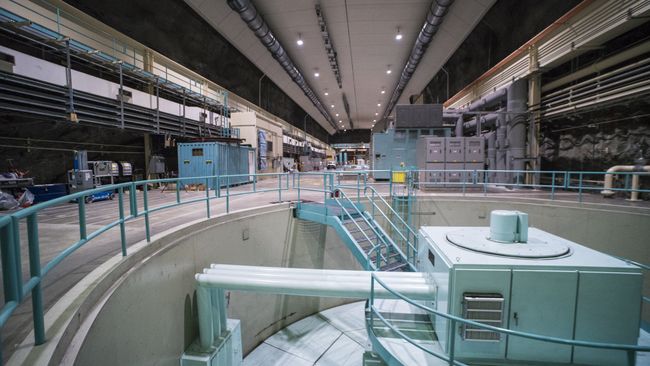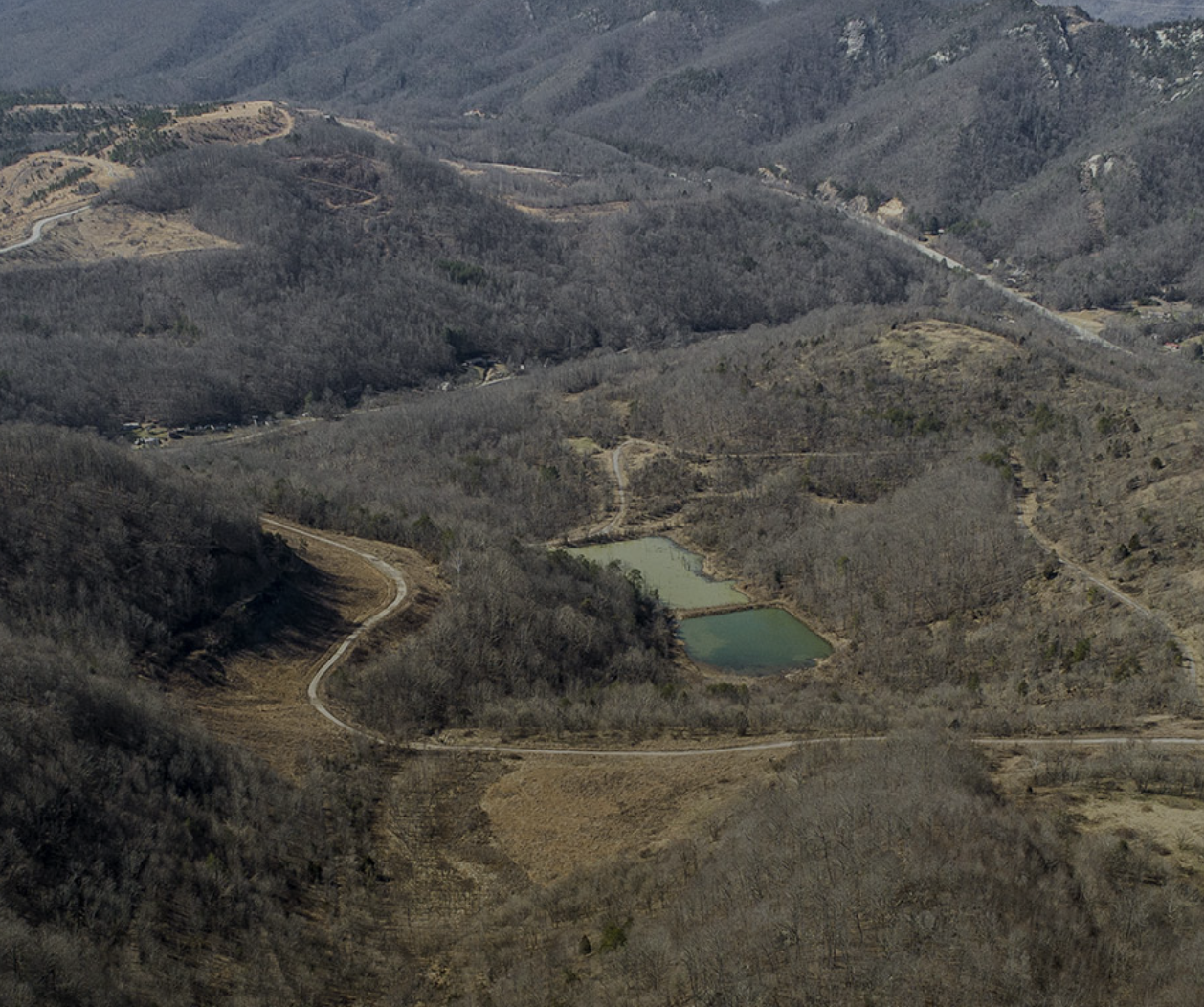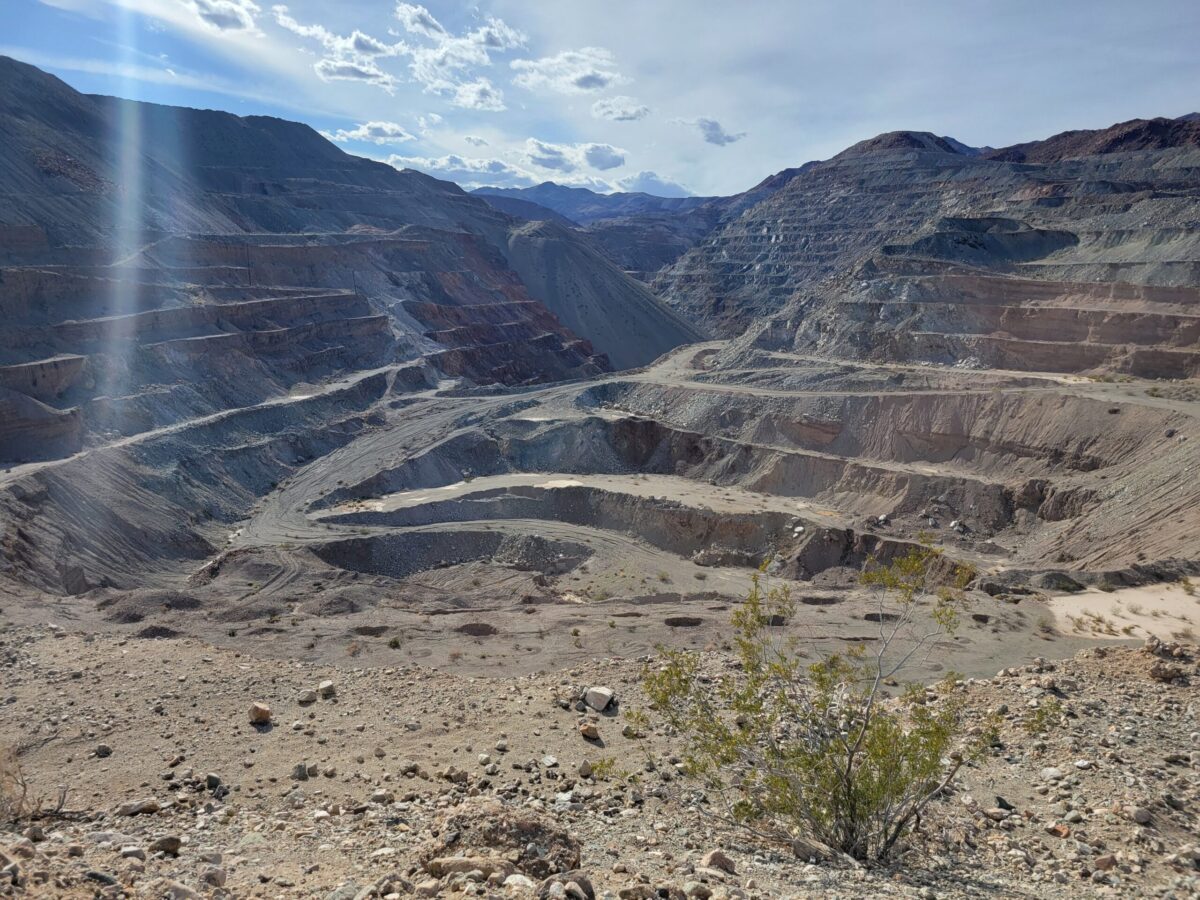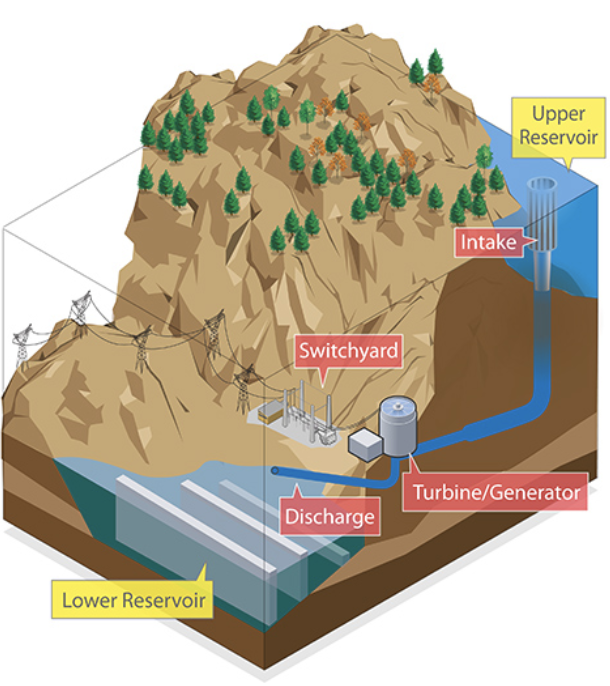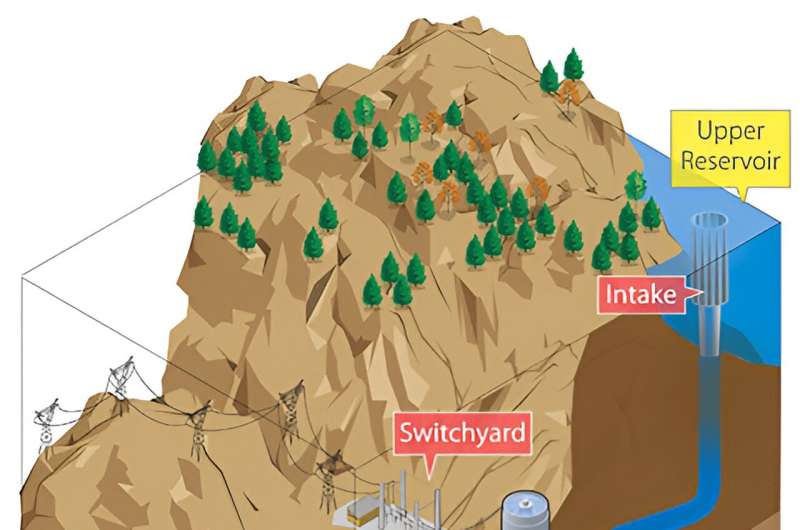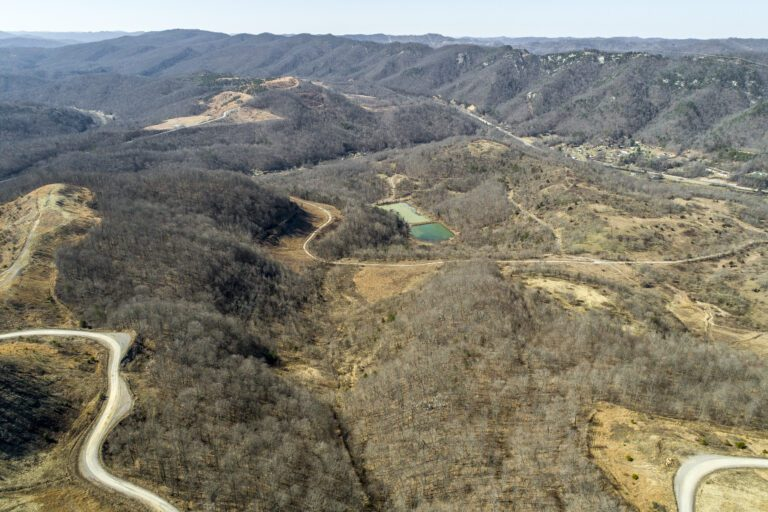
This land near Pineville, Kentucky, formerly the site of a coal mine, will be repurposed as the location of a pumped storage hydropower facility. Courtesy: Rye Development
A project that will demonstrate the conversion of a former coal mine in Bell County, Kentucky, into a utility-scale 287-MW pumped storage hydroelectric facility has garnered federal backing from the Department of Energy’s (DOE) Office of Clean Energy Demonstrations (OCED).
Rye Development, a pumped storage hydropower developer, on Sept. 25 secured $12.1 million—the first tranche of an $81 million award—to kick off the first phase of the Lewis Ridge Pumped Storage project under the Department of Energy’s (DOE’s) Clean Energy Demonstration Program on Current and Former Mine Land (CEML).
The Lewis Ridge Pumped Storage Project will utilize a closed-loop system featuring two artificial reservoirs at different elevations to generate and store renewable energy. This grid-connected system will operate by moving water between the reservoirs to produce electricity on demand.
According to a preliminary permit granted by the Federal Energy Regulatory Commission (FERC) in March 2022, the facility will include a 5,700-foot-long, 77-foot-high zoned rockfill embankment ring dike surrounding the upper reservoir, which will have a surface area of 30 acres and a storage capacity of 2,300 acre-feet. A 4,987-foot-long, 20-foot-diameter power tunnel will channel water from the upper reservoir to a 420-foot-long powerhouse that contains four 54-MW reversible pump turbines capable of generating a total of 216 MW. The proposed facility is expected to have estimated annual generation of 605,000 MWh.
Water will be pumped from the lower reservoir to the upper one when electricity demand is low and released back to generate power during peak periods. The lower reservoir, spanning 23 acres and holding 2,300 acre-feet of water, will be enclosed by a 1,400-foot-long, 100-foot-high zoned rockfill dam and an embankment dike. Additionally, a 1,700-foot-long pipeline connected to the Cumberland River will provide water for the system’s initial filling.
Since FERC issued Rye a preliminary permit and granted it priority to file a license application in 2022, the company has moved swiftly. Rye now expects to submit a draft license application to FERC this fall, with a final license application to follow in the second quarter of 2025. FERC’s decision is anticipated by the second quarter of 2027. Construction will kick off thereafter, spanning 2027 to 2031. The facility is expected to be operational in 2031.
The Lewis Ridge project is one of five selected by the DOE in March 2024 for funding as part of CEML, which seeks to demonstrate the technical and economic viability of clean energy projects on mine land across the U.S. In total, the program has allocated $475 million to support renewable energy initiatives on both current and former mine sites in Arizona, Kentucky, Nevada, Pennsylvania, and West Virginia.
Alongside Lewis Ridge, these projects include “Copper Recovery to Support America’s Domestic Energy Supply Chain” in Arizona, a project that seeks to deploy geothermal and battery storage at copper mines. Another project, “Decarbonizing Gold Mines in Nevada,” will develop and build a solar PV and battery storage system at active gold mines. “A Model for Transition: Coal-to-Solar in West Virginia” will convert two coal mines into a 250-MW solar PV facility. “Mineral Basin: Coal-to-Solar in Pennsylvania” will also transform former coal land into a 402-MW solar project. On Sept. 25, notably, OCED awarded more than $2 million to the Mineral Basin Solar Project, led by Mineral Basin Solar Power, LLC, to initiate Phase 1 activities of developing a 402-MW solar PV generation facility on a former coal mining site in Clearfield County, Pennsylvania, with a total federal cost share of up to $90 million.
The Lewis Ridge project, however, is especially significant because it is poised to become the first pumped storage hydropower facility in the U.S. built on former coal mine land.
“Repurposing former mine land with pumped storage hydropower can deliver cost-effective, reliable electricity to surrounding communities while providing backup power for intermittent renewable energy,” OCED said. “It can also improve air quality by reducing local reliance on high polluting fossil fuel-based peaker plants. The project has the potential to demonstrate how traditional energy communities that powered America for generations can become leaders in the clean energy economy.”
Under the demonstration’s 12-month-long first phase, Lewis Ridge will begin work on budgeting, scheduling, permitting, land rights, and FERC licensing. In addition, it will initiate community benefit activities, including continuing two-way engagement with impacted communities and workers, planning workforce and community agreements, and assessing project benefits and impacts.
In a recent interview with POWER, Sandy Slayton, vice president of Rye Development, noted the project is slated to create 1,500 construction jobs, including “dozens of direct and indirect operational sustainable-wage jobs.”
Slayton noted that the project site, located near the town of Pineville, is on private lands primarily owned by Asher Land and Mineral, where five coal seams intersect the project area. “The first records of coal mining are from the 1950s. Since that time, many mining operations have stopped and started; however, coal extraction has stopped within the project area,” she said.
The project will be pivotal in demonstrating how the U.S. can “breathe new life” into former mining sites with proven technology built to last more than a century, Slayton said. However, “Currently, the Lewis Ridge Project is the only pumped storage facility in the U.S. being proposed on former mining lands,” she added. “Rye Development is excited to bring pumped storage—the largest, most proven energy storage technology—to Kentucky, which has a long legacy of powering the nation.”

